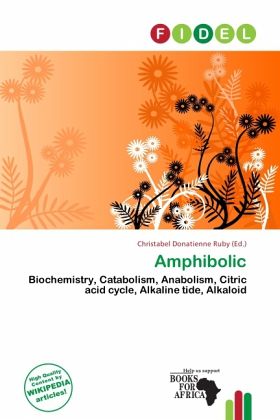
Amphibolic
Biochemistry, Catabolism, Anabolism, Citric acid cycle, Alkaline tide, Alkaloid
Herausgegeben: Donatienne Ruby, Christabel
Versandkostenfrei!
Versandfertig in 6-10 Tagen
26,99 €
inkl. MwSt.

PAYBACK Punkte
13 °P sammeln!
Please note that the content of this book primarily consists of articles available from Wikipedia or other free sources online. The term amphibolic is used to describe a biochemical pathway that involves both catabolism and anabolism. The citric acid cycle (The Krebs Cycle) is a good example. The first reaction of the cycle, in which oxaloacetate (a four carbon compound) condenses with acetate (a two carbon compound) to form citrate (a six carbon compound) is typically anabolic. The next few reactions, which are intramolecular rearrangements, produce isocitrate. The following two reactions are...
Please note that the content of this book primarily consists of articles available from Wikipedia or other free sources online. The term amphibolic is used to describe a biochemical pathway that involves both catabolism and anabolism. The citric acid cycle (The Krebs Cycle) is a good example. The first reaction of the cycle, in which oxaloacetate (a four carbon compound) condenses with acetate (a two carbon compound) to form citrate (a six carbon compound) is typically anabolic. The next few reactions, which are intramolecular rearrangements, produce isocitrate. The following two reactions are typically catabolic. -COO is lost in each step and succinate (a four carbon compound) is produced.












